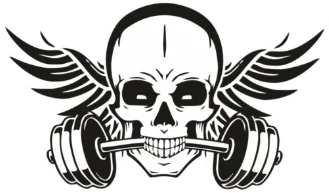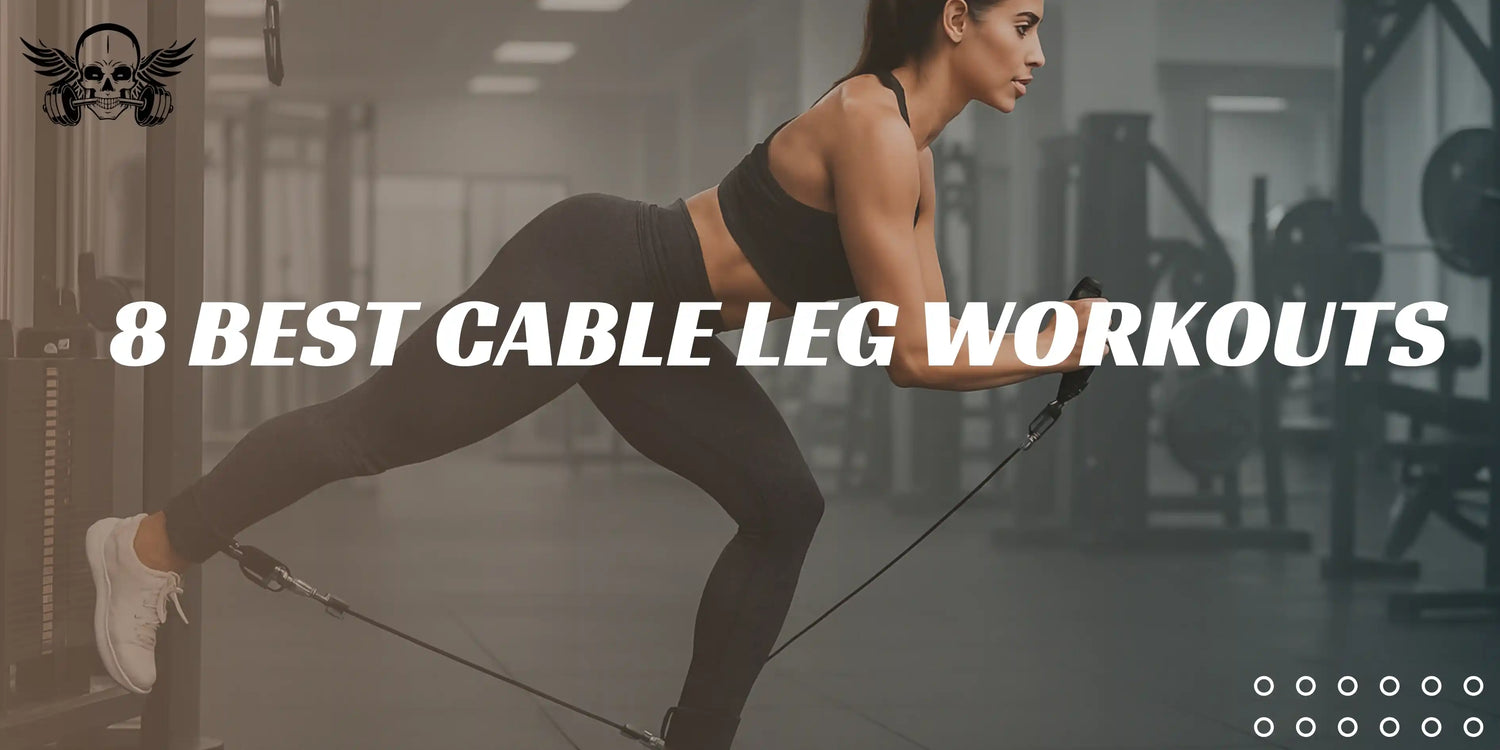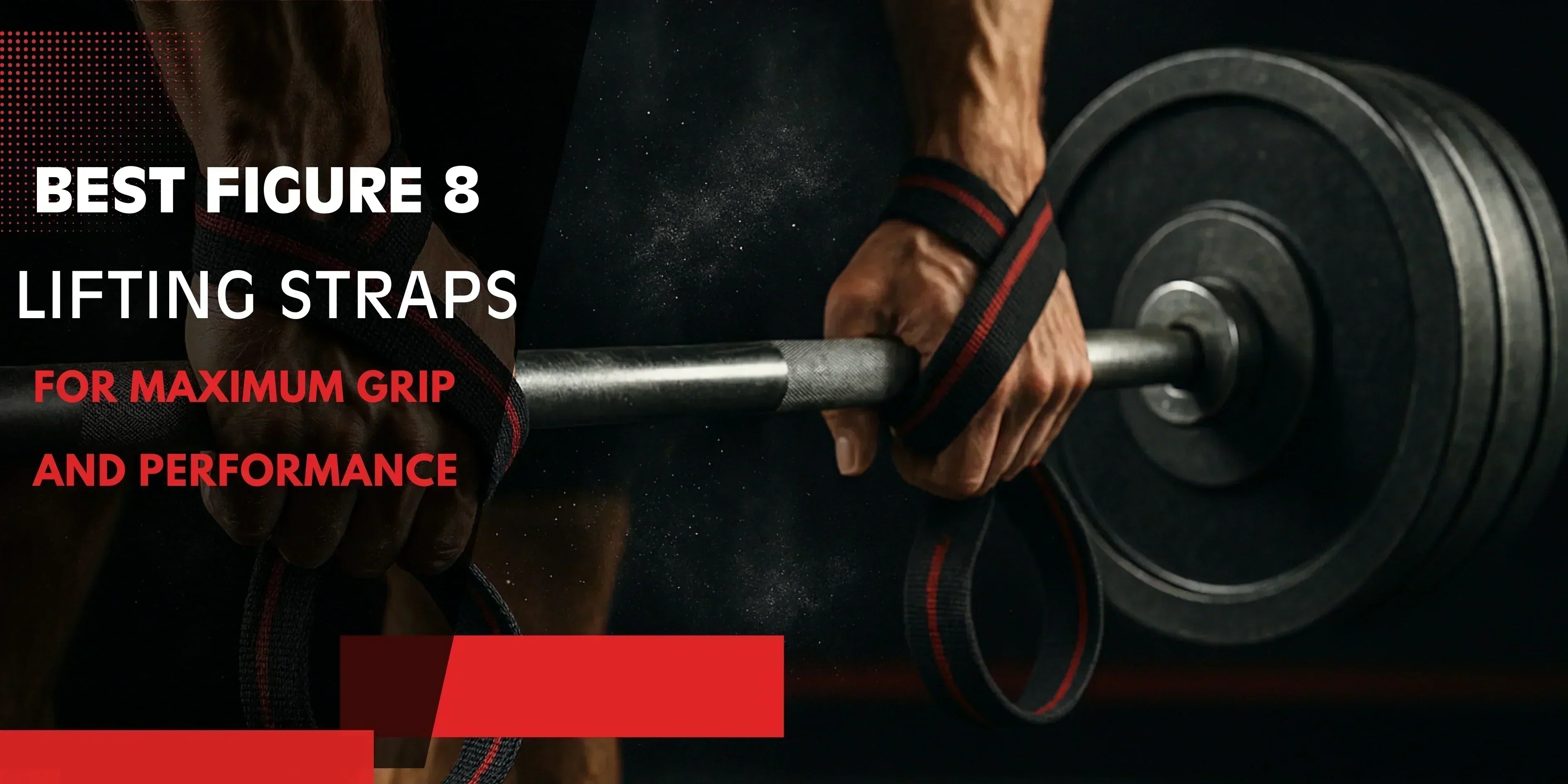Cable leg workouts keep your muscles under constant tension throughout the full range of motion, unlike free weights, which can create “dead zones” in certain positions due to gravity. The pulley system allows you to adjust the height, angle, and resistance to target different muscles while engaging your hips, glutes, quads, and core together.
8 Cable Leg Exercises for Strength, Muscle & Stability
Standing cable movements also challenge your balance and core stability, making them more functional. Plus, cables are safer for beginners and those with joint concerns, as they remove the need to balance a heavy barbell overhead.
1. Cable Goblet Squat
Cable Goblet Squat Targets: Quadriceps, glutes, core
How to Do a Cable Goblet Squat the Right Way?
Set a low pulley with a rope or straight bar attachment and face the machine. Hold the handle at chest height like a goblet, keeping your feet shoulder-width apart. Brace your core and lower into a squat until your thighs are parallel to the floor. Press through your heels to return to standing.
Why Are Cable Goblet Squats Great for Reducing Spinal Stress?
The forward pull of the cable encourages an upright torso, reducing spinal compression and teaching proper squat form without the risk of dropping a barbell. Holding the handle at chest height also engages your core to prevent forward pull.
2. Cable Romanian Deadlift (RDL)

Cable RDLs Targets: Hamstrings, glutes, lower back
How to Do a Cable RDL Properly?
Stand near the machine and attach a straight bar to the low pulley. Keep your spine neutral and feet hip-width apart. Let the bar slide down your legs until you feel a stretch in your hamstrings, then push your hips forward and squeeze your glutes to return to standing tall.
Why Are Cable RDLs Effective for Lower Back Safety?
Cable RDLs keep constant tension on the hamstrings and glutes while being easier on the lower back than heavy barbell versions. They’re great for learning the hip hinge and adding volume without excessive spinal load.
3. Cable Pull Through
Cable Pull Throughs Targets: Glutes, hamstrings, lower back, core
How to Perform a Cable Pull Through Correctly?
Attach a rope to the low pulley and stand facing away from the machine. Reach between your legs to grab the rope, then hinge at your hips and let it move behind you. Drive your hips forward and squeeze your glutes to bring the rope up to hip height.
Why Are Cable Pull Throughs Great for Glute Development?
This spine-friendly hinge variation builds glute strength, improves lockout power for deadlifts, and teaches hip extension without loading the back heavily.
4. Cable Split Squat / Reverse Lunge
Cable Split Squats Targets: Quadriceps, glutes, hamstrings, core
How to Do a Cable Split Squat or Reverse Lunge?
Attach a D-handle to the low pulley. Hold it in one hand while stepping back with the opposite leg. To stand, drive through the front heel after lowering your front thigh until it is parallel to the ground.
Why Are Cable Split Squats Important for Leg Balance?
Unilateral training improves balance, corrects muscle imbalances, and strengthens stabilizing muscles around the hips and knees.
5. Cable Glute Kickback

Cable Glute Kickbacks Targets: Gluteus maximus, hamstrings
How to Perform a Cable Glute Kickback the Right Way?
Attach the ankle straps for the cable machine to the low pulley and face the machine. Hinge forward slightly, brace your core, and extend your strapped leg behind you, squeezing your glute at the top.
Why Are Cable Kickbacks Effective for Glute Activation?
They isolate the glutes, provide constant tension, and promote a strong mind-muscle connection for better posterior chain development.
6. Cable Hip Abduction
Cable Hip Abduction Targets: Gluteus medius, hip abductors
How to Do Cable Hip Abductions Correctly?
Attach an ankle cuff to the low pulley and stand sideways to the machine. With your working leg away from the machine, lift it outward without tilting your torso.
Why Are Cable Hip Abductions Important for Stability?
They strengthen the glute medius, which improves lateral stability, enhances knee alignment, and helps prevent lower body injuries.
Also Read: 5 Best Cable Chest Exercises for Muscle Growth
7. Cable Leg Extension and Tibialis Raise
Cable Leg Extensions & Tibialis Raises Targets: Quadriceps (leg extension), anterior tibialis (tibialis raise)
How to Perform Leg Extensions and Tibialis Raises?
Leg extensions: Attach the ankle cuff at shin height, sit facing the machine, and extend your leg until straight.
Tibialis raises: Attach the strap around the forefoot and pull toes toward your shin while seated.
Why Are These Exercises Great for Lower Body Health?
Leg extensions isolate and strengthen the quadriceps for better leg definition, while tibialis raises and fortifies shin muscles to prevent shin splints and improve ankle stability.
8. Cable Single-Leg Calf Raise
Cable Calf Raises Targets: Gastrocnemius, soleus
How to Do Cable Single-Leg Calf Raises Properly?
Stand on a block with the ball of your foot. Hold a low pulley handle for balance, drop your heel below the platform, then raise onto your toes.
Why Are Cable Calf Raises Great for Lower Leg Strength?
They build strong, defined calves for better ankle stability, explosive athletic movement, and lower body symmetry.
Best Cable Leg Workout Routine for Beginners and Advanced Lifters
Cable goblet squat: 3×10–12
Cable RDL: 3×8–10
Cable split squat: 3×10–12/leg
Cable pull through: 3×12–15
Cable hip abduction: 3×15/leg
Cable glute kickback: 3×15/leg
Cable calf raise + tibialis raise superset: 3×15–20 each
How Can You Maximize Results from Cable Leg Workouts?
- Warm up with dynamic drills to protect joints.
- Focus on the mind-muscle connection, and squeeze the target muscles at peak contraction.
- Progressive overload: increase resistance, reps, or sets over time.
-
Listen to your body and adjust your weight if you feel joint discomfort.
Frequently Asked Questions
1. Are cable leg workouts better than free weight exercises for beginners?
Yes, cables provide constant tension, adjustable resistance, and a safer range of motion, making them ideal for beginners who want to master form without heavy joint stress.
2. Can you build muscle with just cable leg workouts?
Absolutely. Cables allow progressive overload, muscle isolation, and varied angles of resistance, which can effectively stimulate muscle growth when paired with proper nutrition and recovery.
3. How often should I do cable leg workouts?
Most people benefit from 1–2 sessions per week, depending on total training volume and recovery ability.
4. Do cable machines work the stabilizer muscles?
Yes. Standing cable exercises challenge balance and coordination, activating stabilizers in the hips, core, and lower body.
5. Which cable leg exercise is best for glute growth?
Cable glute kickbacks and cable pull throughs are among the best for targeting and isolating the glutes.
Ready to Strengthen and Sculpt Your Legs?
Now that you know exactly how each cable exercise works, you can build a powerful, balanced lower body while keeping your joints safe.
Shop our padded ankle cuffs and supportive weight belts today and receive 25% These accessories are the perfect companion to your cable routine, ensuring safety, comfort and maximum muscle engagement.
We’d love to know how you incorporate cables into your leg training. Do cable pull‑throughs feel more effective when you’re strapped in? Have you tried cable hip abductions to target your side glutes? Please share your stories with us on Instagram.





Leave a comment
This site is protected by hCaptcha and the hCaptcha Privacy Policy and Terms of Service apply.